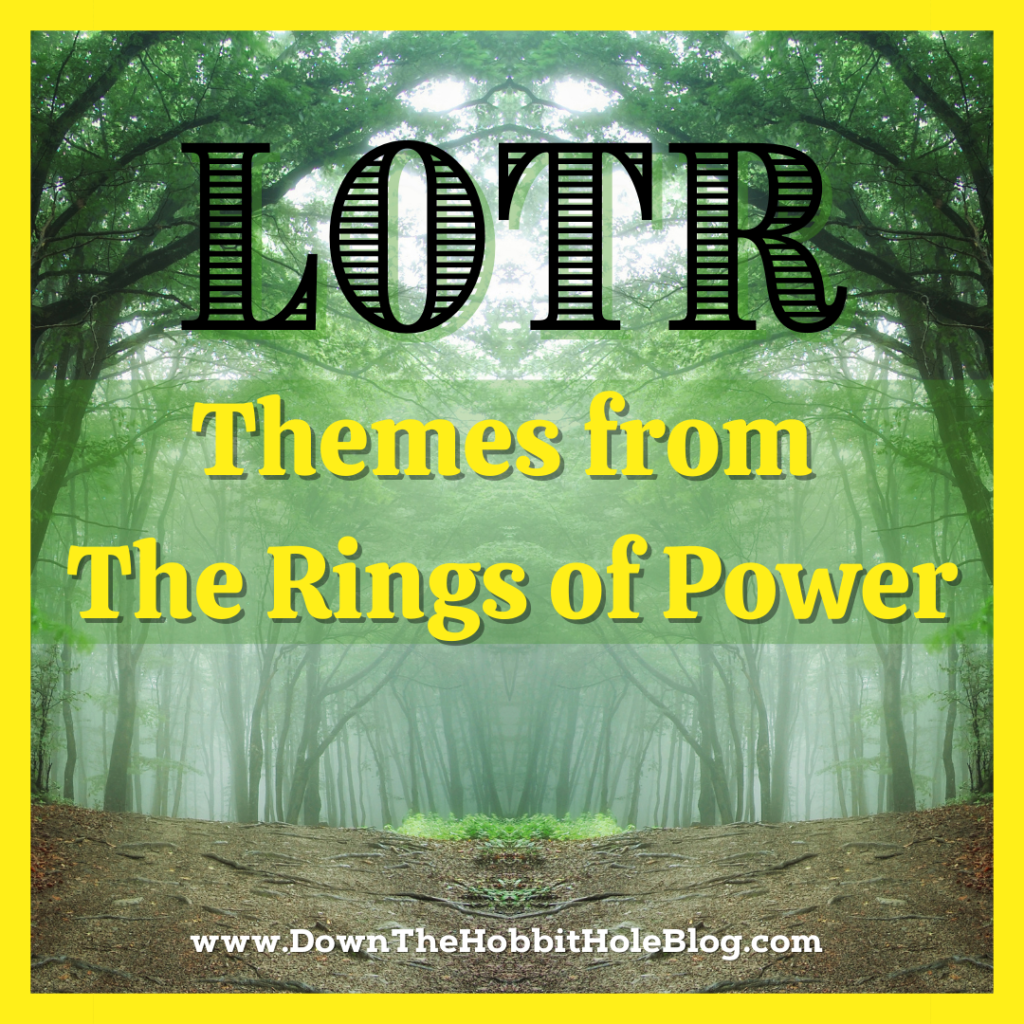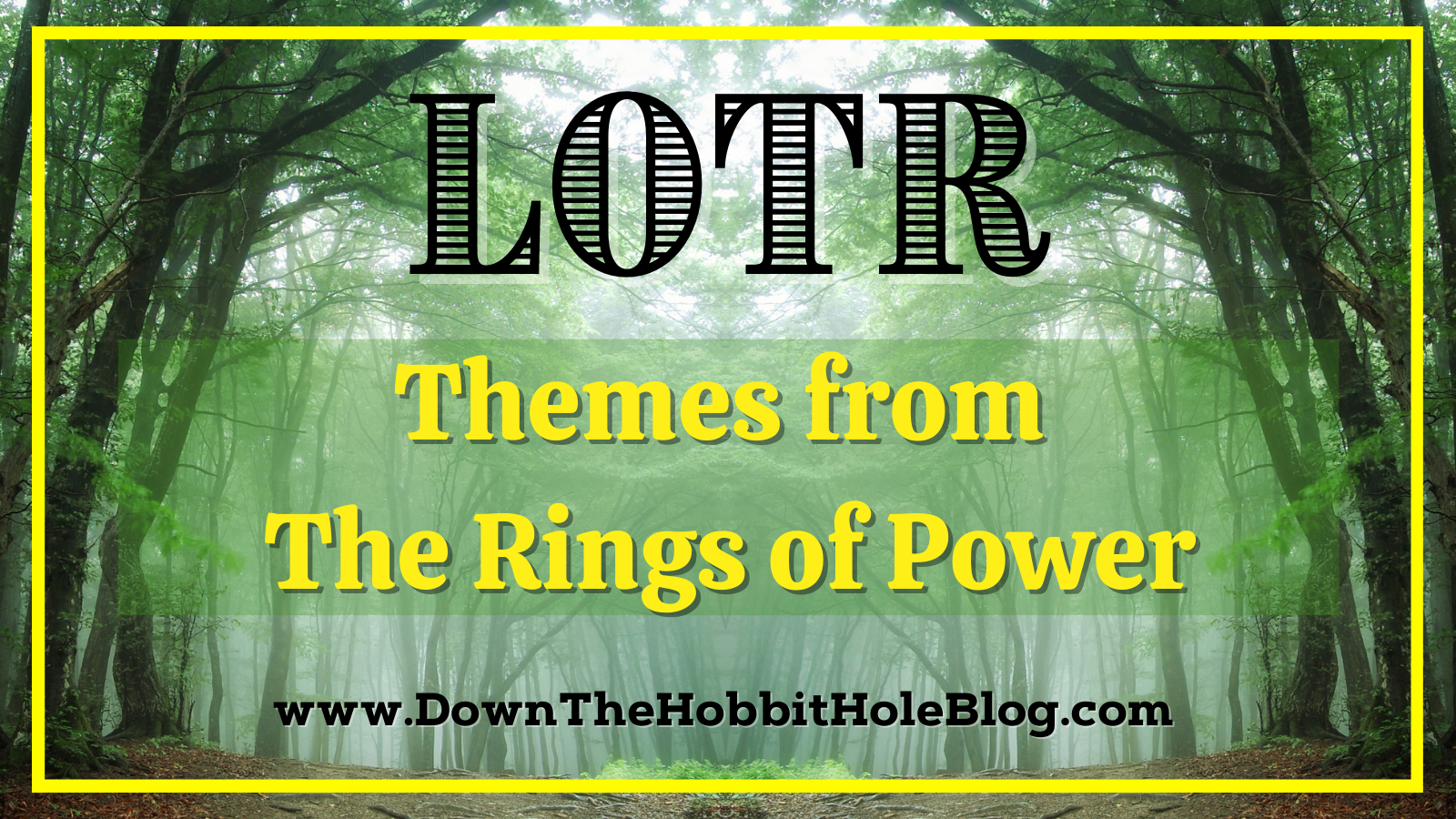Themes from The Rings of Power written by the Hobbit. This post contains affiliate links, you can find out more on our policies page or in the disclaimer at the bottom of the blog.
Know Before You Watch The Rings of Power
Show: The Lord of the Rings: The Rings of Power
Premiere Air Date: September 9th, 2022
Streaming Service: Amazon Prime Video
(Available to Amazon Prime Subscribers – You Can Subscribe Now)
Length: Eight 65 minutes episodes
Rating: TV-14
Genre: Fantasy, Drama
The Reception of The Rings of Power
When we think of J.R.R. Tolkien and adaptations of his works many people think of The Hobbit and The Lord of the Rings. Both have received several adaptations (with the most popular being Peter Jackson’s Lord of the Rings Film Trilogy). Then in 2022, we experienced The Rings of Power. There were negative reviews before the episodes aired. Although it was a critical success and has been consistently among the top ten most streamed shows, there are still some doubts. Are these justified?
In these two articles, we want to look at three reasons why we believe The Rings of Power, overall, did a great job of being true to the author. Note that we are not considering acting, score, cinematography, etc. The question is simply whether the series is faithful to the Tolkien source material.
You can check out our other episode guides for 1, 2, 3, 4, 5, 6, 7 and the finale of The Rings of Power
Was The Rings of Power
Faithful to Tolkien?
The first reason we would say The Rings of Power is a faithful adaptation is the very nature of Tolkien’s works. For many people, their exposure to Tolkien is, as noted, through the finished works: The Hobbit and The Lord of the Rings. Some may have read The Simarillion. In reading these, we may miss one important aspect of his work. Tolkien thought of his history of Middle Earth, his legendarium, as written accounts of other oral and written stories dating back thousands of years.
As such there would be competing versions. Unfinished Tales of Numenor and Middle-earth contains most of what we know about the Second Age (and includes material on the other two ages). In it we read that:
“many natural histories and geographies were composed by learned men in Númenor; but these, like nearly all else of the arts and sciences of Númenor at its high tide, disappeared in the Downfall. Even such documents as were preserved in Gondor, or in Imladris (where in the care of Elrond were deposited the surviving treasures of the Northern Númenórean kings) suffered from loss and destruction by neglect.”
Unfinished Tales of Numenor and Middle-earth
It would be expected by Tolkien’s internal logic that dates and events might be incorrect. As part of this, Tolkien did not work and rework stories to fit a perfect, unblemished lore. It is doubtful that he would have published these; it is his son, Christopher, who painstakingly went through his father’s notes to put together The Simarillion and several other works. Two other examples (dealing with the much more documented First Age) illustrate this well:
“It was indeed my father’s intention to alter the narrative so that Túrin slew himself not at Cabed-en-Aras but on the mound of Finduilas by the Crossings of Teiglin; but this never received written form.”
“It may be noted that it was my father’s intention to extend the history of the Dragon-helm of Dor-lómin into the period of Túrin’s sojourn in Nargothrond and even beyond; but this was never incorporated into the narratives.”
Unfinished Tales of Numenor and Middle-earth
Tolkien did not believe his legendarium was a finished work. He was constantly reworking and rethinking. He internally incorporated this into his writings. And, of all the periods in his history, the Second Age (which is the setting for The Rings of Power) has less written about it than the others. Making some changes that alter some details of this period, while remaining true to the overall themes, is consistent with what Tolkien was constantly doing.
The second reason is The Rings of Power feels like Tolkien. What do we mean by this? Two things. The first, which we will return to in our next essay, is style. For this essay, we want to look at themes. While there is no end to the books and papers that delve into the themes of The Lord of the Rings and The Hobbit, I have chosen one that represents well the myriad of others, “Walking with Frodo” by Sarah Arthur.
Continue reading for out Themes from The Rings of Power

Themes from The Rings of Power
These themes do contain
Spoilers for The Rings of Power
Theme 1- Choosing Light versus Choosing Darkness.
While there are multiple examples, the conversation between Galadriel and Sauron at the end of the last episode is a great example.
Theme 2- Choosing Humility versus Choosing Pride.
Again, lots of examples, but one example that I think shows this is King Durin and Prince Durin. Prince Durin shows great humility (not easy for a dwarf) in his dealings with Elrond. His father, on the other hand, shows a great deal of pride, which leads them into conflict.
Theme 3- Choosing Integrity versus Choosing Corruption.
I think we will see more of this as we go forward, but we can already see this at work in Numenor with the Faithful.
Theme 4- Choosing Loyalty against Choosing Betrayal
The greatest example of this in Rings of Power is Arondir. His loyalty and sacrifice are what allow a remnant of the Southlanders to survive.
Theme 5- Choosing Forgiveness against Choosing Disunity.
Rings of Power takes an important theme in The Lord of the Rings and builds on it. Dwarves and elves are not naturally friends (and we see this in other parts of the legendarium). But they can learn and develop friendships, which, as we see in Rings of Power, includes forgiveness.
Theme 6- Choosing Honesty versus Choosing Deceit
The hidden identity of Sauron, and the deceit associated with it, is a major theme during season one.
Theme 7- Freedom Contrasted with the Choice of Bondage.
Waldreg is the clearest example of choosing bondage and he and his followers pay a heavy price. Queen Miriel’s decision to help the Southlanders is perhaps the best example of choosing freedom.
Theme 8- Choosing Servanthood over Choosing Control
Prince Durin chooses to serve his friend – at a high personal cost. His father is intent on control.
Theme 9- Despair and Hope
We can perhaps see the best example in Miriel and her conversation with Elendil in the last episode.
Closing Thoughts on Themes from The Rings of Power
There are many ways, as noted, to see themes in Tolkien’s works. And what we have done skims the surface. But it is good to note that the show feels like Tolkien. These are not themes that you will find in all fantasy literature, and it would have been quite easy, in the name of making the series “better”, to have abandoned at least some of these.
We will turn to Tolkien’s lecture/essay in part two, “On Fairy Stories”. It will give us good criteria for further evaluation.
Thanks for reading our Themes from The Rings of Power. Here’s what to check out next:
–The Rings of Power Summaries: You can start at Episode 1 or jump to the Finale
-Lessons from Tolkien on Reading Day-Tolkien: A Review of the Biopic Movie by a Fan
-5 Things We Learned from Mr. Roger
-Narnia: The Lion the Witch and the Wardrobe Book vs Movie
Down The Hobbit Hole Blog and this Themes from The Rings of Power Post use affiliate links. We only link products we think you’ll like and you are never charged extra for them. As Amazon Associates, we earn from qualifying purchases at no additional cost to you. All images used in this post were either original designs from Canva or used from media kits We also use cookies to gather analytics and present advertisements. Find our other reviews with discussion questions here. And our posts about family stuff here.
